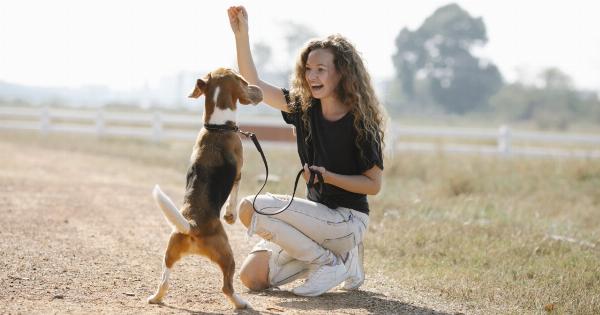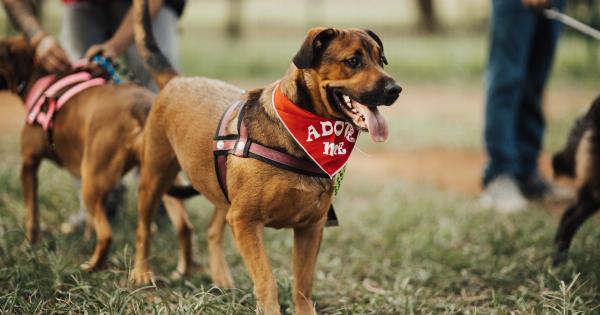As a dog owner, you know that your dog’s behavior is influenced by various factors such as breed, training, environment, health, and genetics. However, not many people realize that their behavior also affects their dog’s behavior in many ways.
The way you interact with your dog, your tone of voice, body language, mood, habits, and lifestyle can all have an impact on your dog’s emotions, actions, and reactions. In this article, we will explore the relationship between our behavior and our dogs, and how we can use this knowledge to improve our bond, communication, and training.
The Power of Body Language and Tone of Voice
Dogs are masters of body language and tone of voice. They can read our emotions, intentions, and messages through our body movements and vocal expressions more accurately than through words.
For example, if you approach your dog with a tense posture, raised voice, and angry face, your dog will sense your agitation and may react defensively or fearfully. On the other hand, if you come with a relaxed stance, soft voice, and friendly smile, your dog will feel more comfortable and receptive.
Therefore, it is crucial to be aware of your body language and tone of voice when communicating with your dog.
If you want to praise, encourage, or teach your dog, use a calm, clear, and cheerful tone of voice, and accompany it with positive body language such as petting, smiling, or offering treats. If you need to correct, redirect, or discipline your dog, use a firm, but not aggressive, tone of voice, and express it with neutral or assertive body language such as standing tall, using eye contact, or blocking unwanted behavior.
The Influence of Habits and Lifestyle
Dogs are creatures of habit. They thrive on routine, consistency, and predictability. Therefore, your habits and lifestyle can greatly affect your dog’s behavior and well-being.
For instance, if you have a sedentary lifestyle, rarely exercise, and eat unhealthy foods, your dog may become overweight, bored, and lethargic. If you have a chaotic schedule, often leave your dog alone for long hours, and neglect his basic needs such as potty breaks, socialization, and playtime, your dog may become anxious, destructive, and disobedient.
Moreover, if you expose your dog to harmful substances such as tobacco smoke, alcohol, drugs, or toxic chemicals, you may endanger his health, develop behavior problems, and impair his life span.
Therefore, it is essential to adopt healthy habits and lifestyle that benefit both you and your dog. You should provide your dog with regular exercise, nutritionally balanced diet, mental stimulation, social interaction, and preventive healthcare.
You should also establish a routine that includes set times for feeding, walking, playing, training, and sleeping, and stick to it as much as possible. Additionally, you should avoid exposing your dog to toxins, dangers, and stressors, and create a safe, clean, and comfortable environment for him to live and thrive in.
The Importance of Positive Reinforcement and Punishment
Dogs learn through trial and error, observation, imitation, and feedback. One of the most effective ways to reward good behavior and discourage bad behavior is through positive reinforcement and punishment.
Positive reinforcement means rewarding your dog for doing something right, such as sitting, coming when called, or fetching, by offering him something he likes, such as praise, petting, playtime, or treats. Positive punishment means adding something aversive or unpleasant to discourage your dog from doing something wrong, such as pulling on the leash, jumping on people, or chewing the furniture, by using a loud noise, spray bottle, or firm voice.
However, it is important to note that punishment should be used sparingly and only as a last resort, and never in a harsh, physical, or abusive way, as it can cause fear, anxiety, aggression, or resentment, and damage your relationship with your dog.
Positive reinforcement, on the other hand, should be used frequently and consistently, as it strengthens your bond, builds trust, and enhances your dog’s positive emotions, associations, and habits.
The Role of Attention, Time and Patience
Dogs crave attention, love, and affection. They want to be close to us, to please us, and to feel our presence. Therefore, your attention, time, and patience are crucial factors in shaping your dog’s behavior and personality.
If you ignore your dog, neglect him, or treat him harshly, he may become withdrawn, depressed, or aggressive. If you spend quality time with your dog, interact with him, and show him affection and praise, he will become more confident, sociable, and obedient.
If you are patient with your dog, and understand that he may have some bad habits, fears, or traumas, and that he needs time and guidance to overcome them, he will become more loyal, resilient, and loving.
Therefore, it is important to give your dog the attention, time, and patience he deserves. You should make time for regular training, play, and bonding activities, such as walks, fetch, obedience, agility, or games.
You should also provide him with the mental and physical stimulation he needs, such as puzzle toys, chew toys, puzzles, and interactive play. Additionally, you should be patient with your dog’s mistakes, limitations, and quirks, and seek professional help if necessary, such as from a veterinarian, trainer, or behaviorist, to address any behavioral issues.
The Benefits of Understanding and Empathy
One of the most important aspects of the relationship between our behavior and our dogs is understanding and empathy. Dogs are not robots or machines. They are living beings with feelings, needs, and personalities.
They may not always behave as we expect, or follow our commands, but they do so for reasons that may be related to their physical, mental, or emotional state. Therefore, it is crucial to understand and empathize with your dog, to see things from his perspective, and to communicate with him in a way that respects his dignity and individuality.
If you want to improve your relationship with your dog, you should try to understand his body language, vocal cues, and behavior patterns, and respond to them accordingly.
You should also learn about his breed, history, and temperament, and adapt your training, socialization, and care to them. Additionally, you should be empathic and compassionate towards your dog, and avoid using punishment, scolding, or force, as they can undermine your dog’s confidence, trust, and happiness.
Instead, you should use positive reinforcement, praise, and affection, and build a bond of mutual respect, admiration, and love.
The Conclusion
In conclusion, the relationship between our behavior and our dogs is a complex, yet fascinating, topic that involves many elements, such as body language, tone of voice, habits, lifestyle, reinforcement, punishment, attention, time, patience, understanding, and empathy. By understanding and applying these elements in a positive, consistent, and respectful way, you can enhance your bond, communication, and training with your dog, and promote his physical, mental, and emotional well-being.
Remember, a well-behaved, happy, and healthy dog is not only a joy to have, but also a reflection of your own behavior and values.


























